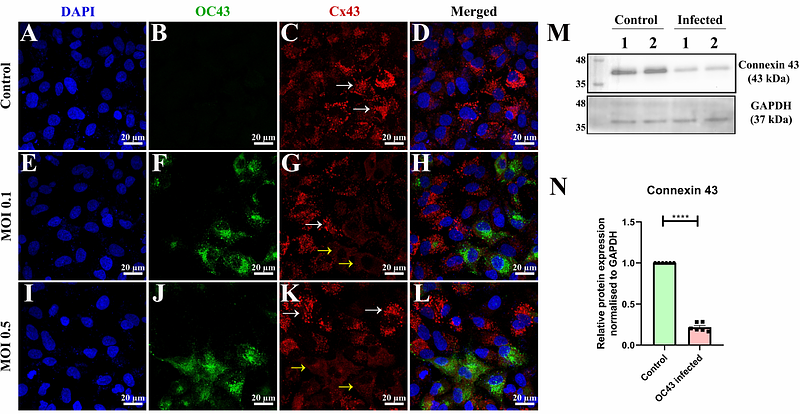Human coronavirus OC43 infection remodels Connexin 43 mediated gap junction intercellular communication in vitro

Human coronavirus OC43 infection remodels Connexin 43 mediated gap junction intercellular communication in vitro
Karmakar, S.; Das Sarma, J.
Abstract{beta}-coronaviruses cause acute infection in the upper respiratory tract, resulting in various symptoms and clinical manifestations. OC43 is a human {beta}-coronavirus that induces mild clinical symptoms and can be safely studied in the BSL2 laboratory. Due to its low risk, OC43 can be a valuable and accessible model for understanding {beta}-coronavirus pathogenesis. One potential target for limiting virus infectivity could be gap junction-mediated communication. This study aims to unveil the status of cell-to-cell communications through gap junctions in human {beta}-coronavirus infection. Infection with OC43 leads to reduced expression of Cx43 in A549, a lung epithelial carcinoma cell line. Infection with this virus also showed a significant ER and oxidative stress increase. Internal localization of Cx43 is observed post OC43 infection in the ERGIC region, which impairs the gap junction communication between two adjacent cells, confirmed by Lucifer yellow dye transfer assay. It also affects hemichannel formation, as depicted by the EtBr uptake assay. Altogether, these results suggest that several physiological changes accompany OC43 infection in A549 cells and can be considered an appropriate model system for understanding the differences in gap junction communication post-viral infections. This model system can provide valuable insights for developing therapies against human {beta}-coronavirus infections.